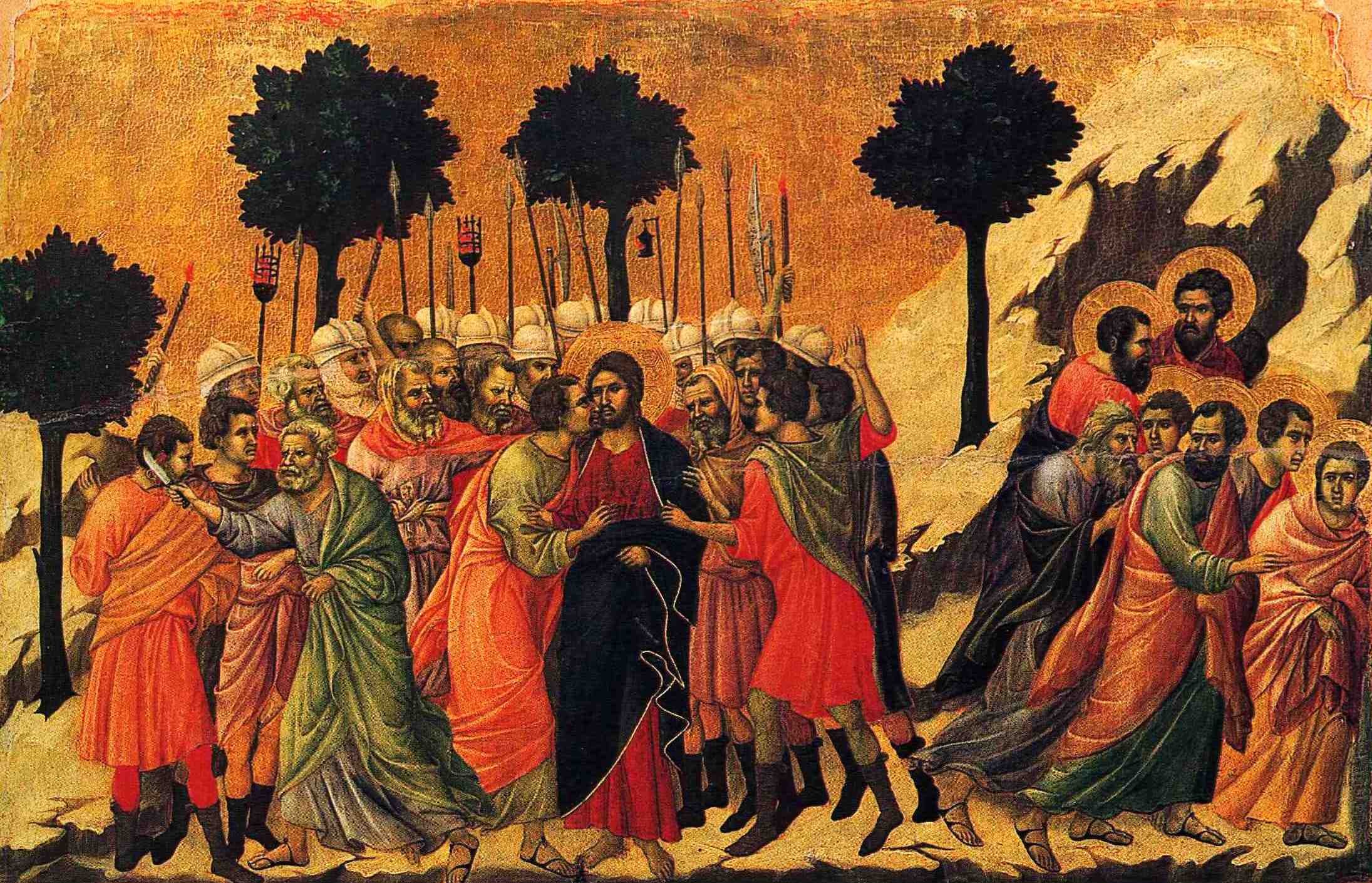Donatello's "David"
Florence 1440-1460
Italian Renaissance
Bronze, 5' high
This representation of David, slayer of Goliath, became the symbol of the Florentine Republic and was the first free standing nude sculpture since Roman days. With slight femininity in stance, David is adorned with a crown of leaves resembling old Roman heros and reflecting Donatello's interest in classical art.
Donatello was the father of sculpture and this is one of his most notable works. The detail and ambiguity of the piece is what attracts me most.
Sunday, September 30, 2012
Primavera
Sandra Botticelli
"Primavera"
1482 Florence
Tempera on wood
6'8"x 10'4"
Commissioned by the Medici family, "Primavera" was the first large scale mythological painting in the Early Renaissance. I enjoyed the painting because, for a change, it had no religious basis. The fruits of fertility surround Venus, goddess of beauty and love, and there seems to be a renewed sense of happiness. To the right of Venus is Flora, goddess of flowers, and her former self, Chlora, with Zephyr the God of wind. Above Venus is the mischievous cupid, and to the left of her are the three Graces and Mercury.
(Ch. 21)
"Primavera"
1482 Florence
Tempera on wood
6'8"x 10'4"
Commissioned by the Medici family, "Primavera" was the first large scale mythological painting in the Early Renaissance. I enjoyed the painting because, for a change, it had no religious basis. The fruits of fertility surround Venus, goddess of beauty and love, and there seems to be a renewed sense of happiness. To the right of Venus is Flora, goddess of flowers, and her former self, Chlora, with Zephyr the God of wind. Above Venus is the mischievous cupid, and to the left of her are the three Graces and Mercury.
(Ch. 21)
Sunday, September 23, 2012
"Saint Anthony Tormented by Demons" by Martin Schongauer
"Saint Anthony Tormented by Demons"
Martin Schongauer
1480-1490 engraving
Northern Renaissance- Holy Roman Empire
This is a metal engraving that involved burning a copper plate and using acids to eat the exposed parts.
Martin Schongauer
1480-1490 engraving
Northern Renaissance- Holy Roman Empire
This is a metal engraving that involved burning a copper plate and using acids to eat the exposed parts.
"Miraculous Draught of Fishes" Konrad Witz
"Miraculous Draught of Fishes" by Konrad Witz
Oil on wood
1444
German Painter
Northern Renaissance- Holy Roman Empire
This image depicts the release of Saint Peter from prison as well as the first Pope's failure to walk on water like Jesus. The landscape is key because the water and sky are nearly perfect. The reflections in the water look realistic as well as the clearness of the water.
Oil on wood
1444
German Painter
Northern Renaissance- Holy Roman Empire
This image depicts the release of Saint Peter from prison as well as the first Pope's failure to walk on water like Jesus. The landscape is key because the water and sky are nearly perfect. The reflections in the water look realistic as well as the clearness of the water.
"Portinari Altarpiece" by Hugo Van Der Goes
Hugo Van Der Goes
Portinari Altarpiece (open)
Florence, Italy
Tempera Oil on wood
1476- Northern Renaissance
"Adoration of the shepherds" is the theme of the central panel presenting solemn grandeur. The Flemish were most impressed with Hugo's use of realism in the draperies, animals and human character.
Portinari Altarpiece (open)
Florence, Italy
Tempera Oil on wood
1476- Northern Renaissance
"Adoration of the shepherds" is the theme of the central panel presenting solemn grandeur. The Flemish were most impressed with Hugo's use of realism in the draperies, animals and human character.
Pietrus Christus "A Goldsmith in His Shop"
Pietrus Christus
"A Goldsmith in His Shop"
1449
Oil on wood
Flemish
Northern Renaissance
According to the textbook, this painting is about Saint Eligius sitting in his stall, showing an elegantly attired couple a section of rings. The scales are a symbol for justice and the bride's dress is a symbol of chastity. Apparently it is viewed in a religious context as well as more of a vocational context.
The special attention to detail of the little objects in the background are evidence of applied naturalism. The convex mirror enhances the illusion of reality.
"A Goldsmith in His Shop"
1449
Oil on wood
Flemish
Northern Renaissance
According to the textbook, this painting is about Saint Eligius sitting in his stall, showing an elegantly attired couple a section of rings. The scales are a symbol for justice and the bride's dress is a symbol of chastity. Apparently it is viewed in a religious context as well as more of a vocational context.
The special attention to detail of the little objects in the background are evidence of applied naturalism. The convex mirror enhances the illusion of reality.
"Deposition" by Rogier Van Der Weyden
Rogier Van Der Weyden
"Deposition"
center panel of a triptych from Notre-Dame hors-les-murs
Louvain, Belgium 1435
Oil on wood
There is lots of emotion and movement in this painting. A crossbow, incorporated to acknowledge the patrons, is noted in the top corners and the theme continues with the shape of people's bodies (including Jesus).
"Deposition"
center panel of a triptych from Notre-Dame hors-les-murs
Louvain, Belgium 1435
Oil on wood
There is lots of emotion and movement in this painting. A crossbow, incorporated to acknowledge the patrons, is noted in the top corners and the theme continues with the shape of people's bodies (including Jesus).
"Ghent Altarpiece" Jan Van Eyck
(opened)
(closed)
Jan Van Eyck
Ghent Altarpiece
Saint Bavo Cathedral
Ghent, Belgium 1432
Oil on wood
The panel, put simply, depicts Adam and Eve and their sin and is extended to convey humanity's redemption in the eyes of God.
The special attention to detail and surface appearance is the
hallmark of 15th century Flemish panel painting.
"The Well of Moses" Claus Sluter
Claus Sluter
"The Well of Moses" 1395-1406 BCE
Northern Renaissance
Champmol, Dijon, France
Limestone painted and guilded, 6' high
This fountain was made in the well of Chartreuse de Champmol but surprisingly it does not come out. This was because the Carthusian worshipers strongly believed in silence and prayer without distraction.
In this sculpture, Moses is seen with 5 other prophets. Each of the prophets is detailed uniquely.
The sculpture resembles French Gothic jamb statues but contains much more detail.
"The Well of Moses" 1395-1406 BCE
Northern Renaissance
Champmol, Dijon, France
Limestone painted and guilded, 6' high
This fountain was made in the well of Chartreuse de Champmol but surprisingly it does not come out. This was because the Carthusian worshipers strongly believed in silence and prayer without distraction.
In this sculpture, Moses is seen with 5 other prophets. Each of the prophets is detailed uniquely.
The sculpture resembles French Gothic jamb statues but contains much more detail.
Lorenzetti "Birth of the Virgin"
Pietro Lorenzetti
"Birth of the Virgin"
Altar of Saint Savinus
Siena, Italy
Tempera on Wood
International Gothic Style
This painting is an example of a triptych, a 3 part panel painting. Like Martini, Lorenzetti was also a student of Duccio's. Lorinzetti contributed greatly to the experiments in pictoral realism of 14th century Italy by achieving a degree of spatial illusionism in this work.
"Annunciation" by Simone Martini
"Annunciation"
Simone Martini and Lippo Memmi
Siena Cathedral 1333 BCE
Tempera and gold leaf on wood
International Gothic Style
Martini was a pupil of Duccio's who helped create the international gothic style through his use of elegant shapes, bright colors, continuing lines and seemingly weightless figures in a golden spaceless setting.
Martini was a close friend of Petrarch's.
Simone Martini and Lippo Memmi
Siena Cathedral 1333 BCE
Tempera and gold leaf on wood
International Gothic Style
Martini was a pupil of Duccio's who helped create the international gothic style through his use of elegant shapes, bright colors, continuing lines and seemingly weightless figures in a golden spaceless setting.
Martini was a close friend of Petrarch's.
Duccio's "Virgin and Child Enthroned with Saints"
Duccio Di Buoninsegna
"Virgin and Child Enthroned with Saints" Maestá altarpiece from Siena, Italy
Tempera and Gold Leaf on wood
Sienese School 1308-1311 BCE
The Sienese believed the Virgin brought them victory over the Florentines, so she was the religious focus of the public. Duccio was commissioned to paint this work for the high altar of the Siena Cathedral. When the work was completed the whole town of Siena celebrated.
Duccio presents formality and symmetry from Byzantine painting with relaxed and softened features. These techniques are used in French Gothic works and this piece represents dialogue between Italy and N. Europe during the 14th Century.
"Virgin and Child Enthroned with Saints" Maestá altarpiece from Siena, Italy
Tempera and Gold Leaf on wood
Sienese School 1308-1311 BCE
The Sienese believed the Virgin brought them victory over the Florentines, so she was the religious focus of the public. Duccio was commissioned to paint this work for the high altar of the Siena Cathedral. When the work was completed the whole town of Siena celebrated.
Duccio presents formality and symmetry from Byzantine painting with relaxed and softened features. These techniques are used in French Gothic works and this piece represents dialogue between Italy and N. Europe during the 14th Century.
Cimabue vs Giotto: Madonna Enthroned
Giotto Di Bondone
"Madonna Enthroned"
From the church of Ognissanti, Florence
1310 BCE
Tempura and gold leaf on wood
Florentine School
Giotto revived classical naturalism. The angels and Madonna appear to have a full figure that could cast shadows. Giotto's painting is very similar to Cimbaue's version but has a few big differences. The first is that Madonna is portrayed as a voluptuous matriarch in Giotto's version. Also, Giotto adorned his Madonna with a solid black robe, making her appear much heavier concrete than Cimbaue's version, which portrays golden highlights on Madonna's robe.
The key thing to remember about this painting is the naturalistic feature of people and objects appearing to have more weight and dimension.
"Madonna Enthroned"
From the church of Ognissanti, Florence
1310 BCE
Tempura and gold leaf on wood
Florentine School
Giotto revived classical naturalism. The angels and Madonna appear to have a full figure that could cast shadows. Giotto's painting is very similar to Cimbaue's version but has a few big differences. The first is that Madonna is portrayed as a voluptuous matriarch in Giotto's version. Also, Giotto adorned his Madonna with a solid black robe, making her appear much heavier concrete than Cimbaue's version, which portrays golden highlights on Madonna's robe.
The key thing to remember about this painting is the naturalistic feature of people and objects appearing to have more weight and dimension.
Cimabue: Madonna Enthroned with Angels and Prophets
~1280-1290 BCE
Cimabue
Florence
Tempura and Gold leaf on wood
Florentine School
"Madonna Enthroned with Angels and Prophets"
Gold background reveals Byzantine style. The 3 dimensional drapery and deep space for Madonna's throne along with the overlapping angels create a sense of depth. This deep space is common in Byzantine art. This painting contains naturalism.
Cimabue
Florence
Tempura and Gold leaf on wood
Florentine School
"Madonna Enthroned with Angels and Prophets"
Gold background reveals Byzantine style. The 3 dimensional drapery and deep space for Madonna's throne along with the overlapping angels create a sense of depth. This deep space is common in Byzantine art. This painting contains naturalism.
Lamentation by Giotto
Giotto Di Bondone
"Lamentation"
Arena Chapel (Cappella Scrovengi)
Padua, Italy
Fresco
Florentine School
This work llustrates the revolutionary nature of Giotto's style. It depicts Jesus after his death and people hysterically grieving. Mary cradles her dead son's body. This single event provokes a host of individual responses in figures conceiving presences both physically and psychologically.
The dead tree represents the tree of knowledge of good and evil, which died after Adam and Eve sinned.
The lighting is different in this picture. It seems to fall from above and illuminate the tops of their bodies and creates a sense of depth by darkening the bottoms of their clothes.
Giotto's naturalism displaces the Byzantium style in Italy. He impacted artists and inspired them to move away from the spiritual world into a visual world focused on observation and understanding.
"Lamentation"
Arena Chapel (Cappella Scrovengi)
Padua, Italy
Fresco
Florentine School
This work llustrates the revolutionary nature of Giotto's style. It depicts Jesus after his death and people hysterically grieving. Mary cradles her dead son's body. This single event provokes a host of individual responses in figures conceiving presences both physically and psychologically.
The dead tree represents the tree of knowledge of good and evil, which died after Adam and Eve sinned.
The lighting is different in this picture. It seems to fall from above and illuminate the tops of their bodies and creates a sense of depth by darkening the bottoms of their clothes.
Giotto's naturalism displaces the Byzantium style in Italy. He impacted artists and inspired them to move away from the spiritual world into a visual world focused on observation and understanding.
Saint Francis Altarpiece
Bonaventura Berlinghieri
Saint Francis Altarpiece
Pescia, Italy 1235
Tempera on wood
Italio-Byzantine Style
This work is noted because it is the earliest representation of Francis of Assisi. The golden background is very Byzantine.
Stigmata- marks resembling Christ's wounds that miraculously appeared on his hands and feet.
Gold leaf is a key part of this painting too because it emphasizes the image's flatness and spiritual nature. This work highlights the important role of religious order in late medieval Italy.
Saint Francis Altarpiece
Pescia, Italy 1235
Tempera on wood
Italio-Byzantine Style
This work is noted because it is the earliest representation of Francis of Assisi. The golden background is very Byzantine.
Stigmata- marks resembling Christ's wounds that miraculously appeared on his hands and feet.
Gold leaf is a key part of this painting too because it emphasizes the image's flatness and spiritual nature. This work highlights the important role of religious order in late medieval Italy.
Pisano's "Annunciation and (Nativity) Adoration of the Shepherds"
Nicola Pisano
"Annunciation, Nativity, and Adoration of the Shepherds"
relief panel on the baptistery pulpit
Pisa, Italy
1259-1260BCE
Marble
Classical sculpture is noticed in the faces, beards, coiffures, draperies. mary is seen twice in different sizes
"Annunciation, Nativity, and Adoration of the Shepherds"
relief panel on the baptistery pulpit
Pisa, Italy
1259-1260BCE
Marble
Classical sculpture is noticed in the faces, beards, coiffures, draperies. mary is seen twice in different sizes
Giovanni Pisano (Nicola's son)
"Annunciation and Adoration of the Shepherds"
a relief panel on the pulpit of Sant'Andrea
Pistoia, Italy
French Gothic style influenced this work. Nervous agitation is detected as if "moved by spiritual passion". The figures look jumbled and stressed. The deep spaces between the people suggest motion.
Ch. 14- Nicola Pisano "pulpit of the baptistery"
Nicola Pisano
"pulpit of the baptistery"
Pisa, Italy 1259-1260 BCE
Marble, 15' high
Late Gothic Sculpture
Features: trefoil (triple-curved arches), round arches like Roman architecture. Medieval theme with classical undertones. Capitals with 2 rows of thick overlapping leaves crowning the columns are a Gothic variation of the Corinthian capital. The rectangular reliefs resemble Roman sarcophagus.
"classical" refers to Greco-Roman antiquity.
"pulpit of the baptistery"
Pisa, Italy 1259-1260 BCE
Marble, 15' high
Late Gothic Sculpture
Features: trefoil (triple-curved arches), round arches like Roman architecture. Medieval theme with classical undertones. Capitals with 2 rows of thick overlapping leaves crowning the columns are a Gothic variation of the Corinthian capital. The rectangular reliefs resemble Roman sarcophagus.
"classical" refers to Greco-Roman antiquity.
Thursday, September 20, 2012
Tribute Money: 3 scenes on a fresco
Masaccio's "Tribute Money"
1424-1427 Fresco
Brancicci Chapel, Santa Maria del Carmine, Florence, Italy
8'4"x 19'7"
This image depicts the Gospel of Matthew when the tax collector speaks to Jesus at the entrance of Capernaum. On the right side we see Jesus telling Saint Peter to go to Gailelee and on the left side we see Peter finding the coin for taxes in the mouth of the fish.
Artistically, I noticed there was one light source and plenty of Aerial and Linear perspectives. The mountains, trees and the beach are not as bright or as clearly defined as the people surrounding Jesus in the center. This is a good example of how Aerial perspective is displayed.
1424-1427 Fresco
Brancicci Chapel, Santa Maria del Carmine, Florence, Italy
8'4"x 19'7"
This image depicts the Gospel of Matthew when the tax collector speaks to Jesus at the entrance of Capernaum. On the right side we see Jesus telling Saint Peter to go to Gailelee and on the left side we see Peter finding the coin for taxes in the mouth of the fish.
Artistically, I noticed there was one light source and plenty of Aerial and Linear perspectives. The mountains, trees and the beach are not as bright or as clearly defined as the people surrounding Jesus in the center. This is a good example of how Aerial perspective is displayed.
Adoration of the Magi
Adoration of the Magi
by Gentile De Fabrino
International Gothic style
Tempera on wood with an elaborate guilded Gothic frame
15th Century
Altar piece for the Strozzi chapel, Church of Santa Trinita, Florence, Italy
9'11"x 9'3"
This piece stood out to me because of the use of color, careful detail, golden tones, the variety of animals, and the scene depicted alone. The scene, according to the book, depicts chivalry with a central religious focus on Madonna and child. Also noted was the naturalistic style that was used; we see animals depicted from different angles creating a variety of perspectives and shapes.
by Gentile De Fabrino
International Gothic style
Tempera on wood with an elaborate guilded Gothic frame
15th Century
Altar piece for the Strozzi chapel, Church of Santa Trinita, Florence, Italy
9'11"x 9'3"
This piece stood out to me because of the use of color, careful detail, golden tones, the variety of animals, and the scene depicted alone. The scene, according to the book, depicts chivalry with a central religious focus on Madonna and child. Also noted was the naturalistic style that was used; we see animals depicted from different angles creating a variety of perspectives and shapes.
Monday, September 17, 2012
January
"January" by The Limbourg Brothers (Pol, Herman & Jean)
From "Les Trés Riches Heures de duc de Berry"
1413-1416 Netherlands
Early Renaissance- outside of Italy
Dimensions: 8"x5"
Materials: colors and ink on vellum
Commissioned by: Jean duke of Berry, brother of French King Charles V
I liked this painting for a few reasons. The first reason is the contrast of cool and warm colors. The cool colors are more plentiful, exuding a winter like setting or mood in the scene. The second reason is because of the detail and multitude of patterns and lines done in such a small space. The detail one is able to see on such a small scale is impressive. Lastly, I like that the viewer is a wallflower. No one is looking back at the viewer of the image and the viewer feels like an observer.
From "Les Trés Riches Heures de duc de Berry"
1413-1416 Netherlands
Early Renaissance- outside of Italy
Dimensions: 8"x5"
Materials: colors and ink on vellum
Commissioned by: Jean duke of Berry, brother of French King Charles V
I liked this painting for a few reasons. The first reason is the contrast of cool and warm colors. The cool colors are more plentiful, exuding a winter like setting or mood in the scene. The second reason is because of the detail and multitude of patterns and lines done in such a small space. The detail one is able to see on such a small scale is impressive. Lastly, I like that the viewer is a wallflower. No one is looking back at the viewer of the image and the viewer feels like an observer.
Monday, September 10, 2012
Giovanni Arnolfini & His Wife
"Giovanni Arnolfini and his Wife"
Oil painting on oak wood
by Jan Van Eyck of the Netherlands in 1434
15th century (outside Italy) Northern Renaissance
This painting stood out to me because of its complex nature. As the textbook notes, traditional gender roles are recognized. The bride is seen standing next to the bed while the man stands closer to the window. The window that Arnolfini is closer to seems to represent freedom while his wife is farther away from it and deeper in the room. One could dissect meaning in placement of the nuptials. This careful positioning in the painting signifies the patriarchal society that existed in the 15th century and lingers even today.
Additionally, the convex mirror in the background is an interesting detail. Both the bride and Arnolfini are distorted and two additional characters are seen in the doorway. The dog is placed between the two nuptials and the colors of green and purple seem to stand out. Van Eyck includes himself as a witness in the portrait in the mirror.
"Effects of Good Government in the City and in the Country" with "Peaceful Country" (a panorama)
Ambrogio Lorenzetti, "Effects of Good Government in the City and in the Country" with "Peaceful Country"
This is a fresco panorama that compares and contrasts the country side of Tuscany city of Siena. Features like the rolling peaceful hills and starry night of the countryside are contrasted with the bustling markets, towers, streets and buildings of the city. My favorite part about this panorama is the cherubic/angelic figure perched over the countryside. According to the textbook, the figure represents security and safety to all who live under the law.
This figure is ironic because of the Bubonic Plague that devastated Europe and wiped out 25-50% of the population just after this work was completed.
This work was made mid 14th century and belongs to the international gothic styles.
This is a fresco panorama that compares and contrasts the country side of Tuscany city of Siena. Features like the rolling peaceful hills and starry night of the countryside are contrasted with the bustling markets, towers, streets and buildings of the city. My favorite part about this panorama is the cherubic/angelic figure perched over the countryside. According to the textbook, the figure represents security and safety to all who live under the law.
This figure is ironic because of the Bubonic Plague that devastated Europe and wiped out 25-50% of the population just after this work was completed.
This work was made mid 14th century and belongs to the international gothic styles.
A Betrayal of Jesus
Duccio Di Buoninsegna, "A Betrayal of Jesus"
Medium: Tempera and gold leave on wood
Location: Siena Cathedral in Siena, Italy
Size: 1'10" x 3'4"
Sienese School
This is 14th century Italian art (late Medieval Italy) that belongs to the Sienese school.
I like this piece because of the action and variety of emotions and reactions depicted in it. The colors of the disciples contrast with the wardrobes of Judas and Peter. The intent of this work is evident. It is a biblical scene in which the emotion bleeds through expression, posture, color and line.
Medium: Tempera and gold leave on wood
Location: Siena Cathedral in Siena, Italy
Size: 1'10" x 3'4"
Sienese School
This is 14th century Italian art (late Medieval Italy) that belongs to the Sienese school.
I like this piece because of the action and variety of emotions and reactions depicted in it. The colors of the disciples contrast with the wardrobes of Judas and Peter. The intent of this work is evident. It is a biblical scene in which the emotion bleeds through expression, posture, color and line.
Subscribe to:
Comments (Atom)




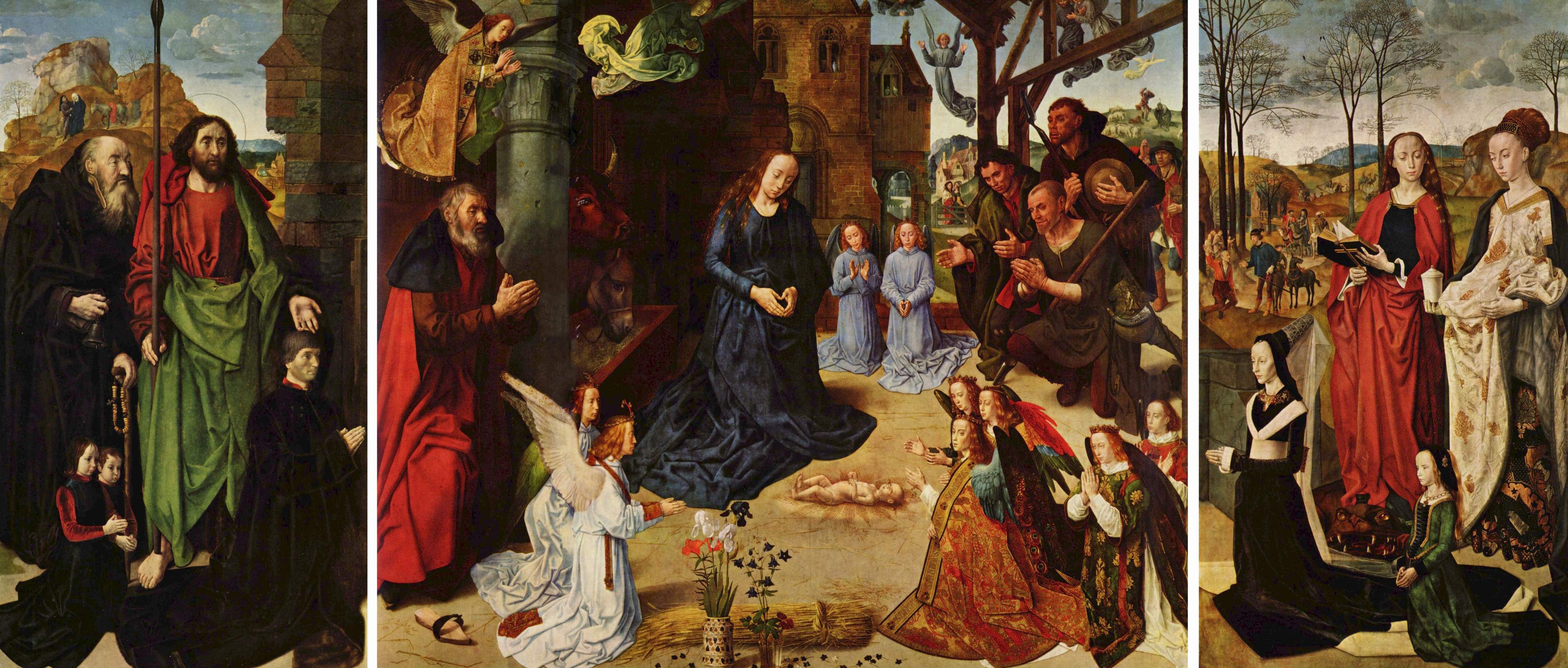


.jpg)


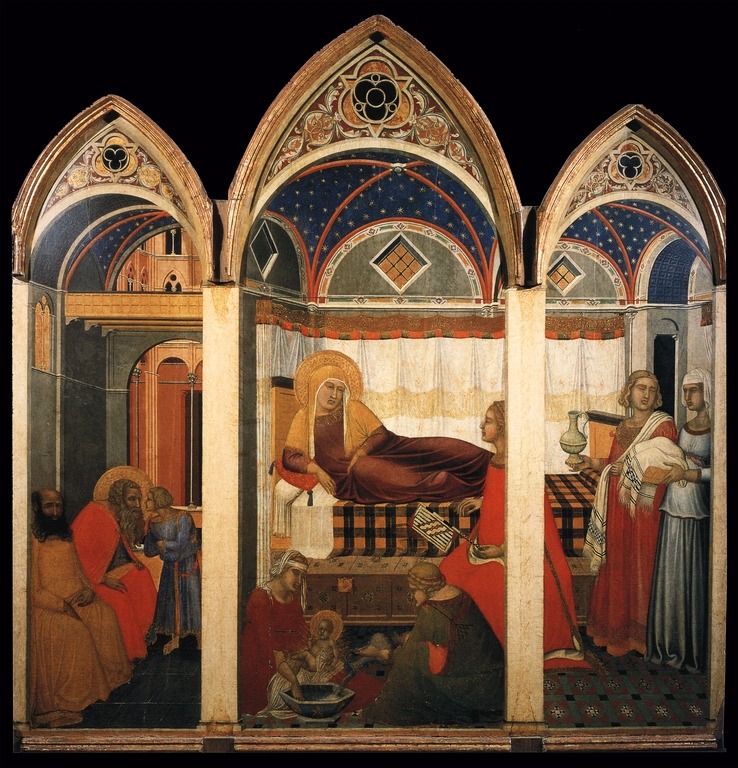
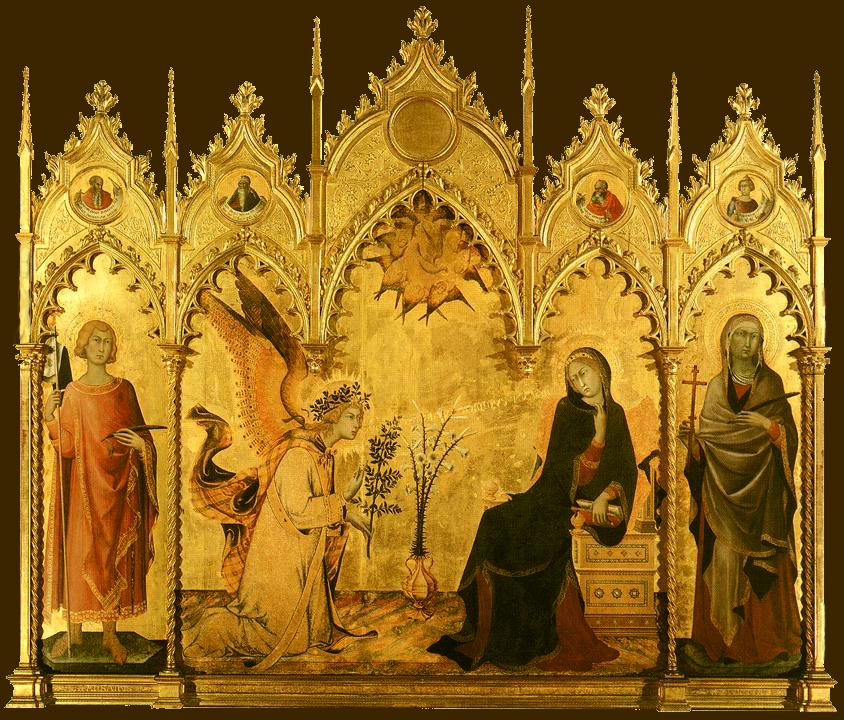

.jpg)

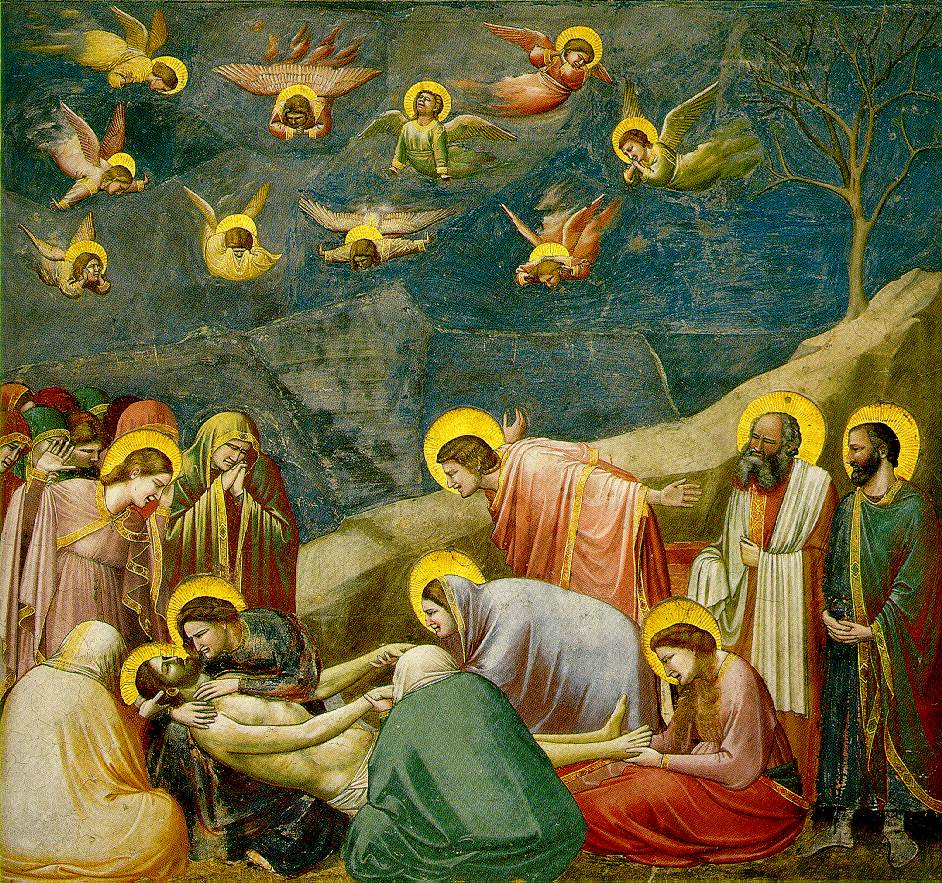




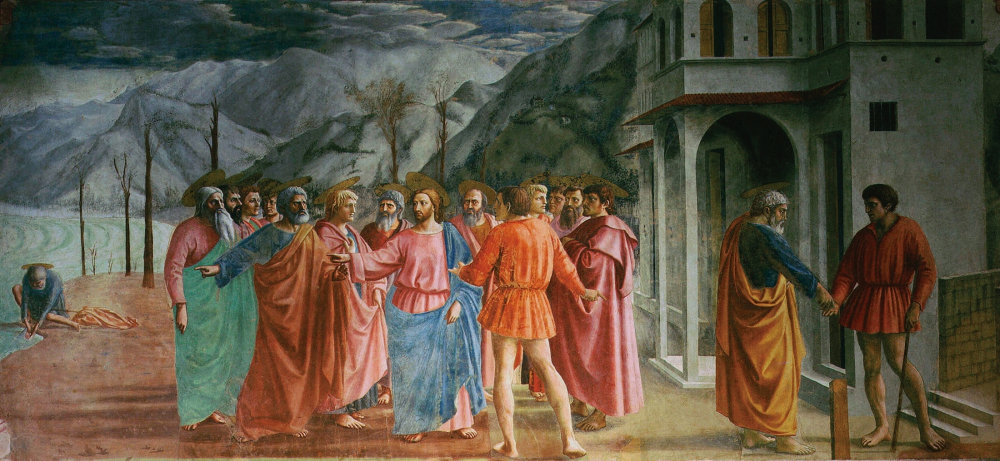

.jpg)




